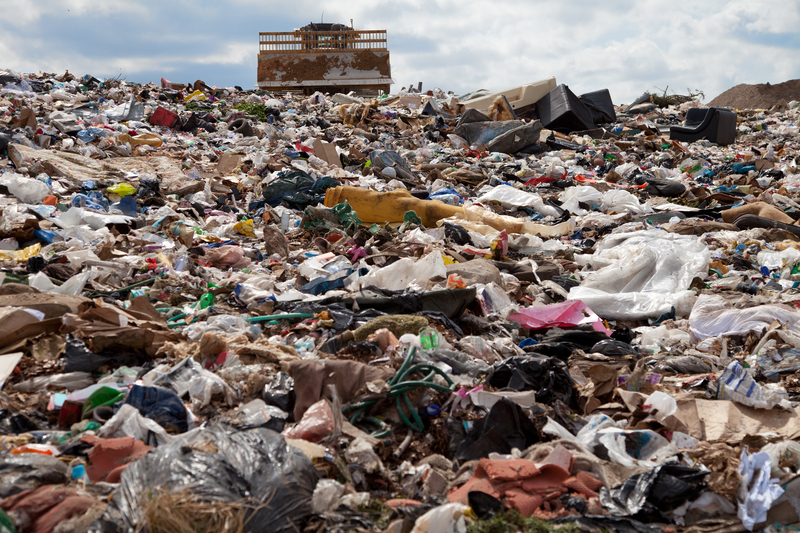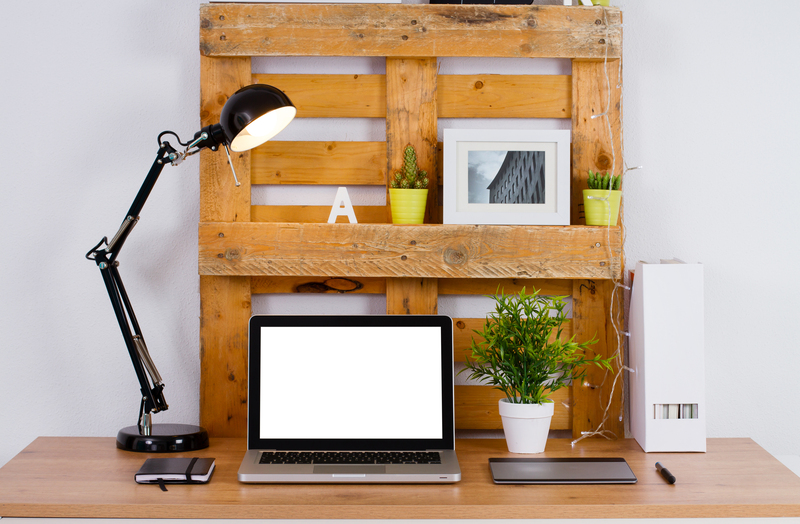Expert Strategies for Clutter Removal and Hoarder Clean Up Success
Are you or someone you know struggling with overwhelming clutter or hoarding habits? While clutter may seem like a minor irritation, it can quickly become a major concern, especially in cases of compulsive hoarding. Expert strategies for clutter removal and successful hoarder clean up are essential for restoring both order and well-being to living spaces.
In this comprehensive guide, we'll dive deep into the most effective clutter removal techniques, offer actionable clean up tips for hoarders, and provide lasting solutions to maintain a clutter-free and healthy environment. Whether you're addressing your own home, helping a loved one, or seeking professional advice, these proven strategies will guide you at every stage of the process.
Understanding Clutter and Hoarding: Key Differences
Before exploring effective clean up methods, it's important to differentiate between common household clutter and clinical hoarding disorder:
- Clutter: Refers to accumulated items that may temporarily make a living space untidy but are generally easy to sort, organize, and remove.
- Hoarding: A recognized mental health disorder, hoarding involves chronic difficulty discarding items, regardless of their value, leading to dangerous living conditions and emotional distress.
By understanding the difference, you can apply the right decluttering strategy or hoarder clean up method to suit the scale and needs of the situation.

Why Removing Clutter and Addressing Hoarding is Crucial
Clutter and hoarding don't just affect home aesthetics--they deeply impact safety, mental health, and overall quality of life. Here's why clutter clean up and hoarder removal are so vital:
- Prevents fire hazards and access issues for emergency responders
- Reduces fall risks and potential injuries
- Improves hygiene by eliminating breeding grounds for pests and mold
- Enhances mental clarity and emotional well-being
- Restores relationships, self-esteem, and quality of life
Now, let's explore the expert strategies for effective clutter removal and hoarder clean up success.
Step-by-Step Strategies for Clutter Removal and Hoarder Clean Up
1. Assessment and Goal Setting
- Conduct a Thorough Assessment: Walk through the property with a critical eye. Identify high-risk areas, potential hazards, and the types of items piled up. Taking photographs can help track progress and motivate change.
- Define Clear, Achievable Goals: Set measurable clean up objectives for each room or space. Break the project into smaller, manageable tasks like "clear off the dining table" or "sort through bedroom closet." This prevents overwhelm and maintains steady motivation.
2. Assemble Your Clean Up Team
- Enlist Family and Friends: Tackle large projects with the help of trusted loved ones. Their support--not judgment--can make a huge difference in progress and morale.
- Consider Professional Hoarder Clean Up Services: Some situations require specialized intervention. Professionals bring expertise, appropriate equipment, and compassion, especially for severe hoarding clean ups.
3. Safety First: Preparation is Key
- Wear Appropriate Gear: For intensive hoarder cleaning projects, use gloves, masks, and sturdy clothing to protect yourself from dust, mold, and sharp objects.
- Ensure Good Ventilation: Open windows and doors whenever possible; use fans if needed.
- Gather Necessary Supplies: Stock up on heavy-duty trash bags, cleaning products, sorting bins, label stickers, and basic tools.
4. Sorting: The Core of Clutter Removal
Sorting is the heart of any decluttering process. Apply these expert-approved categories:
- Keep: Items that are regularly used, serve a real purpose, or have deep emotional significance.
- Donate: Clothes, home goods, or items in good condition that someone else could use.
- Recycle: Papers, electronics, plastics, and metals as per municipal recycling rules.
- Trash: Broken, soiled, expired, or unusable items that can be safely discarded.
- Shred: Confidential paperwork or documents containing sensitive personal information.
*Tip*: Use color-coded bins or labels to streamline the process and avoid confusion.
5. Clutter Removal Room-by-Room: Proven Tactics
- Start with "Easier" Spaces: Begin cleaning small, less emotionally loaded areas like bathrooms or entryways for quick wins.
- Tackle High-Use Spaces Next: Kitchens and living rooms make a big impact on daily life and morale when cleaned.
- Work Top to Bottom: Start at eye-level or above and move lower to avoid dust and debris resettling on cleaned areas.
- Complete Each Section Before Moving On: Avoid jumping between rooms. Finish what you start to build visible momentum.
6. Handling Sentimental and Difficult Items
- Practice the 20/20 Rule: If an item can be replaced for under $20 in less than 20 minutes, consider letting it go.
- Create a Memory Box: Choose a defined space (one box or bin) for irreplaceable mementos. If items no longer fit, make tough decisions about what truly matters.
- Take Photos: For items with emotional value but no practical use, a photo can preserve the memory without the physical clutter.
7. Deep Cleaning and Sanitizing
- After Decluttering, Clean Every Surface: Wipe down, vacuum, and disinfect spaces to remove long-standing dust, grime, and allergens.
- Address Mold and Pest Issues: Treat any signs of infestation or contamination with appropriate chemicals or professional help.
Hoarder Clean Up: Special Considerations and Compassionate Strategies
Cleaning up after a hoarding situation is far more than organizing--it's about addressing the psychological complexity involved. For successful hoarder clean up, adopt these specialized strategies:
1. Avoid Judgment, Practice Empathy
- Understand the Emotional Attachment: Hoarders often fear loss, anxiety, or identity issues linked to possessions.
- Listen with Compassion: Allow hoarders to tell their story and participate in decision-making.
2. Establish Trust and Set Realistic Expectations
- Go at the Person's Pace: Pushing too hard may lead to emotional breakdowns or outright resistance.
- Celebrate Small Wins: Each bag or box cleared is a victory and builds momentum for further progress.
3. Seek Help From Mental Health Professionals
- Therapists and Counselors: Involvement of trained therapists can address the root causes of hoarding and provide techniques for ongoing management.
- Support Groups: Connection with others facing similar challenges can be inspiring and informative.
Long-Term Success: Maintaining a Clutter-Free Home
The best strategy for clutter removal is one that prevents re-accumulation. Here's how to maintain a tidy, organized, and healthy home after your initial hoarder clean up or decluttering project:
1. Develop New Habits and Routines
- Daily 5-Minute Tidies: Spend just five minutes a day putting things away for lasting results.
- One-In, One-Out Rule: For every new item brought in, another must go out.
- Monthly Check-Ins: Regularly review high-clutter zones and address issues before they accumulate.
2. Smart Storage and Organization Systems
- Everything Has a Place: Label storage bins and shelves clearly.
- Vertical Storage Solutions: Make use of walls and doors to maximize space.
- Seasonal Rotations: Store out-of-season items to maintain daily order.
3. Get the Family or Household Involved
- Assign Responsibilities: Give everyone a role in keeping shared spaces clean.
- Review and Update Systems: What works now may need adjustments in the future. Stay flexible and open to new methods.

When to Call Clutter Removal and Hoarder Clean Up Experts
Professional help may be necessary in these scenarios:
- Extreme Clutter or Hoarding Conditions: When DIY efforts are insufficient or risks are too high.
- Biohazardous Materials: Presence of pest infestations, mold, or hazardous waste requires specialist intervention.
- Time Constraints: Fast turnarounds needed for moves, estate clean outs, or rental properties.
- Need for Systematic Organization: Professional organizers offer tailored storage solutions and ongoing maintenance plans.
Benefits of Professional Clutter Removal Services:
- Discreet, non-judgmental assistance for hoarder clean up
- Efficient and safe removal of large amounts of clutter and debris
- Restoration of living spaces to healthy, functional conditions
- Post-cleaning sanitization and basic organization
Conclusion: Your Path to Clutter-Free, Peaceful Living
Whether you're facing a mountain of clutter or embarking on a challenging hoarder house cleaning project, remember: success is possible with the right strategies and support.
By applying these expert strategies for clutter removal and hoarding clean up methods, you'll not only reclaim your home but also improve your overall quality of life. Stay patient, celebrate every milestone, and, when needed, seek help from supportive friends, family, or professional hoarder clean up services.
Start today--one item, one shelf, or one room at a time. A more organized, healthier, and happier home is within your reach!
